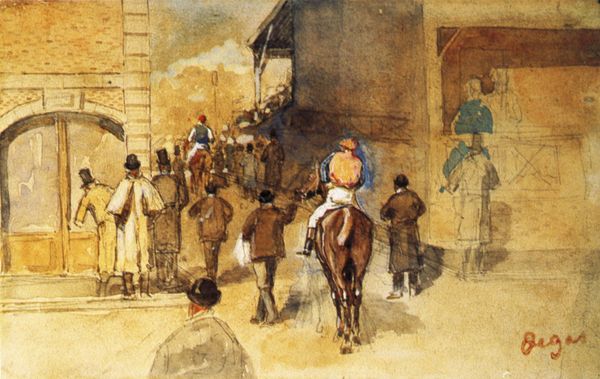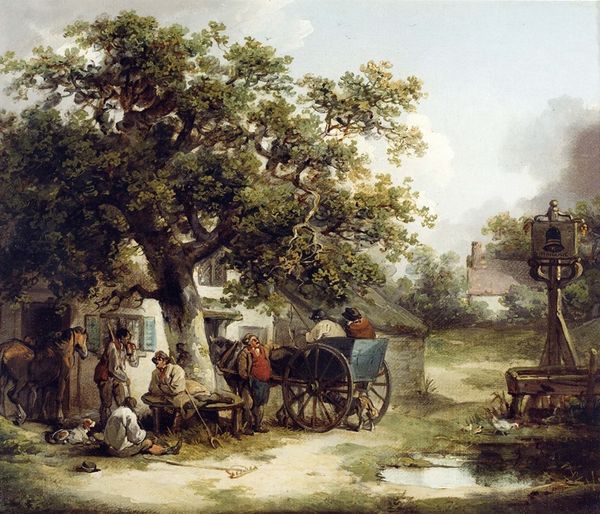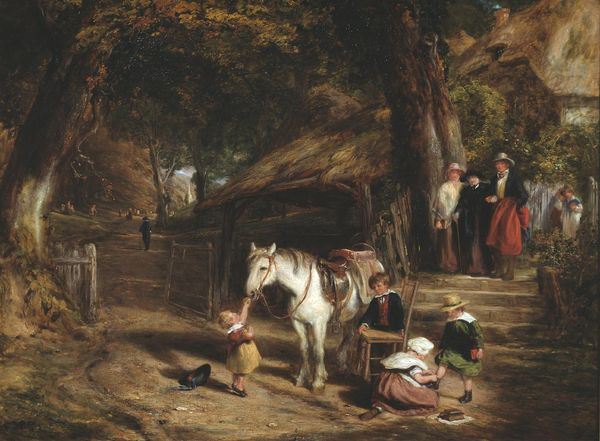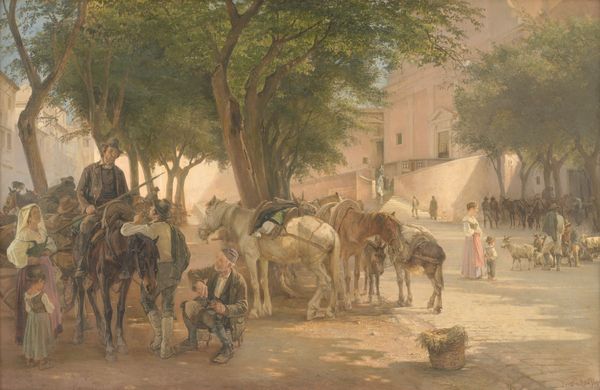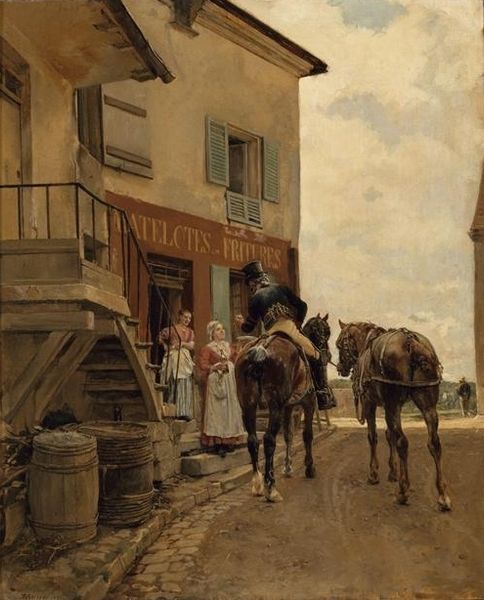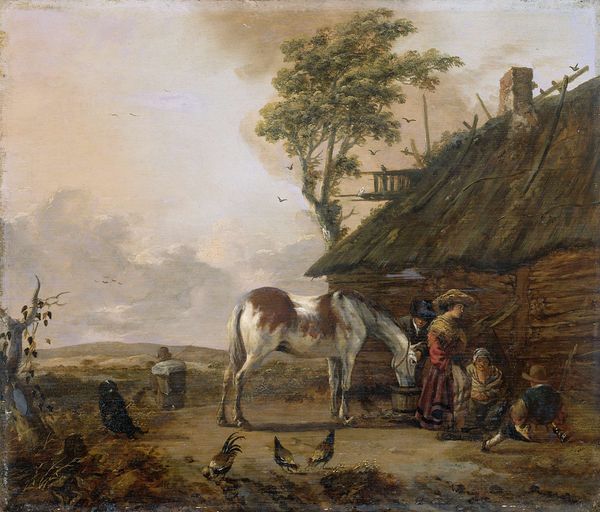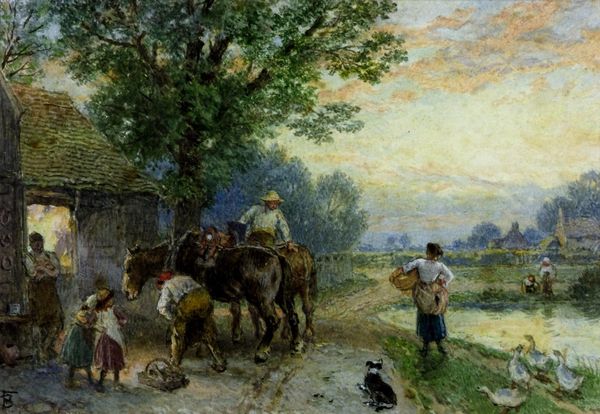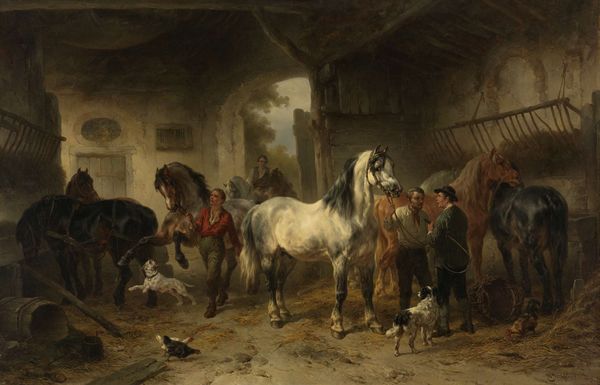
Dimensions: height 20.6 cm, width 28 cm, depth 8.4 cm
Copyright: Rijks Museum: Open Domain
Editor: This is Charles Rochussen’s "De Requisitie," painted in 1872, using oil paint. The scene is busy, filled with figures and horses. The earthy tones and detailed rendering make it feel quite real. What do you notice about this work? Curator: The material choices speak volumes. Oil paint allows for this meticulous realism, mirroring the meticulous processes of 19th-century life. Consider the requisitions implied by the title, the taking of goods for military use. We must ask ourselves, what societal structures allowed this seizure? The painting almost presents this forced transaction as merely another everyday labour, normalized within a specific social hierarchy. Notice the artist's hand; how the material application of the paint simulates reality in a manner which obscures the artist’s physical involvement. Editor: So, you are less interested in the depicted narrative, and more in how the artist created the work and its link to social dynamics? Curator: Exactly! Look at the labor division represented here. Someone raised and trained that horse. Another person forged the officer's sabre. How is each person defined and valued based on these tasks and the system as a whole? Does this scene tell us anything about labour conditions at the time? About the process through which goods went from field to military use? The "how" often informs the "why," revealing power structures invisible on first glance. Editor: I see what you mean. By focusing on materials and labour, we can see the painting less as just a historical scene, but also a document that holds much information about social practices. Thanks, that was helpful! Curator: Indeed. Shifting our focus to how it's *made* rather than simply what it depicts really opens new avenues for interpretation.
Comments
No comments
Be the first to comment and join the conversation on the ultimate creative platform.

